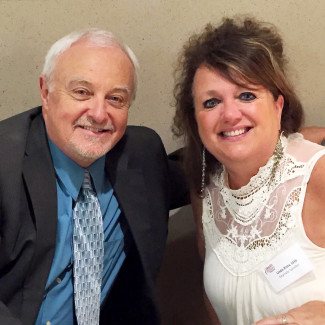“The oak fought the wind and was broken,
the willow bent when it must and survived.”
― Robert Jordan, The Fires of Heaven
Resilience can be described as the process of returning to normal daily functioning or the ability to adapt after being faced with stress, adversity, trauma or tragedy. Resilience is not a trait that people either have or do not have. Resilience involves behaviors, thoughts, and actions that can be learned and developed in anyone. There is a, however, a road to resilience that most likely involves much emotional pain and sadness.
Stressful life events can have a substantial impact on brain function and structure.
Just hours before my 22nd birthday and being 5 months pregnant, my mother’s heart surgeon presents himself to say “your mother will not make it through her open heart surgery”. My heart fell to the floor as no doctor had ever predicted this outcome. My mother was just 44 years old. “My mother will never see my unborn child”. This was the thought that remained with me and caused so much emotional pain at that moment and for years to come. It is sometimes insurmountable obstacles that unleash the very best of ourselves.
Even after misfortune, resilient people are blessed with such an outlook that they are able to change course and soldier on.
They are able to rise from the ashes and become stronger than ever.
My first child was born in April of the next year. My son was born with a very rare condition called CHARGE Syndrome. CHARGE is a recognizable pattern of birth defects. My son is deaf, legally blind, intellectually impaired with many sensory deficits. My dedication to him spans 27 years and has given me a lifetime of resiliency stories.
Throughout my life, I often have had people say to me “how do you do it?”
“What makes you get up in the morning?” So here I present my own thoughts after pondering that very same question, “why do I continue to feel fulfilled and happy when my life has been interwoven with tragedy many times?”
My husband and I went on to have two healthy daughters and also adopted a deaf child, a son from Hangzhou, China in the year 2000. In 2002, my husband, father to my four children, died in a tragic car accident. The pain of losing a husband and father, so young, just 42 years old, was another traumatic event to test all of us in resilience. I remember my youngest daughter, Emily, much more stoic than her older sister, “mommy, why don’t I cry like Charlotte, I miss daddy but I can’t cry like her”. It is important to remember we all grieve and reveal emotion differently. I was able to explain this to her in a very simple way, “your emotions are very much like your dads, he liked to work through his problems in his mind and by doing activities that kept him healthy. Charlotte, she is just like your mom, we cry and show our emotions very easily, this is just the way we were put together on the inside”.
Individual characteristics…
…such as optimism – along with behaviors; active coping, and cognitive reappraisal, can build on one’s ability to weather storms of unpredictability.
Optimism is the expectation for good outcomes and has been consistently associated with the employment of active coping strategies, subjective well-being, physical health and larger and more fulfilling social networks and connections. Relationships that provide care and support, create love and trust, and offer encouragement, both within and outside the family. Optimists report less hopelessness and helplessness and are less likely to use avoidance as a coping mechanism when under duress.
When raising my children, there were many times that tears represented sadness. What I remember, is how those tears were short lived. I always invited others to understand what I was going through and share in my pain. Due to this vulnerability, I opened myself up to many people who could provide comfort and a message of hope and optimism that could get me through the distressing moment.
When my youngest son was 16, we had endured years of his emotional turmoil. This unrest – possibly a result of being deaf, abandoned at such a young age and a minority. I remember a talk from a psychiatrist in an emergency room, he was firm with me “You do not give up on him, he needs you to believe in him now more than ever”. He went on to say that this is the time that many parents throw in the towel with kids who are behaviorally disruptive. This doctor was telling me “you’re not done yet” he gave me the confidence to fight the good fight for many more years to come. He wanted me to stand firmly in optimism.
Active coping using behavioral or psychological techniques utilized to reduce or overcome stress has been linked to resilience in the individual. Strategies that help us actively process the physical and emotional stress that is part of life. Talking with friends and family, writing in a journal, shooting hoops, engaging in yoga, joining an art class, these are all considered active coping skills. Active coping involves thinking, even if it is not about the problem at hand. Active coping helps one refresh the mind.
I have always been active to maintain my physical health. I have always tried to reach out and help others in many different capacities, serving on boards, volunteering, joining committees, taking up legislative issues. It has been important to me to be a good mother, daughter, and friend. It has helped for me to always be aware that I am more than a person who has much adversity in her life, I am also a person who is blessed with much love in her life.
Cognitive reappraisal is also strongly associated with resilience. This is the ability to monitor and assess negative thoughts and replace them with more positive ones. Changing the way one may view events or situations, finding the silver lining in the dark cloud.
I remember friends asking how I reacted when I knew my child was profoundly deaf. It was such a strange question to me as I was just happy that he was alive and the idea that he would not hear to this day has never been a source of sorrow for me. It was my ability to see beyond and not become stuck in a labeled disability. I was able to look at the larger context, how will he communicate with us, researching and educating my own self to the possibilities.
Building resilience does not always come easy.
Having your own personal experience with hardship is what builds your strength and confidence to conquer what comes your way. The process of resiliency can also be helped along by good families, schools, communities and social policies that make resilience more likely to occur. It is important to remember that everyone can develop resilience and the ability to “bounce back” from hardship.
My oldest son is now 27 years old and lives independently with in-home supports. All of my adult children are now facing their own challenges and building their own strength toward resilience. My family offers each other encouragement and support as we discover life’s unexpectancies.
“Fall down seven times… get up eight”
-The happiness institute
Author: Terri Thompson, LCPC









